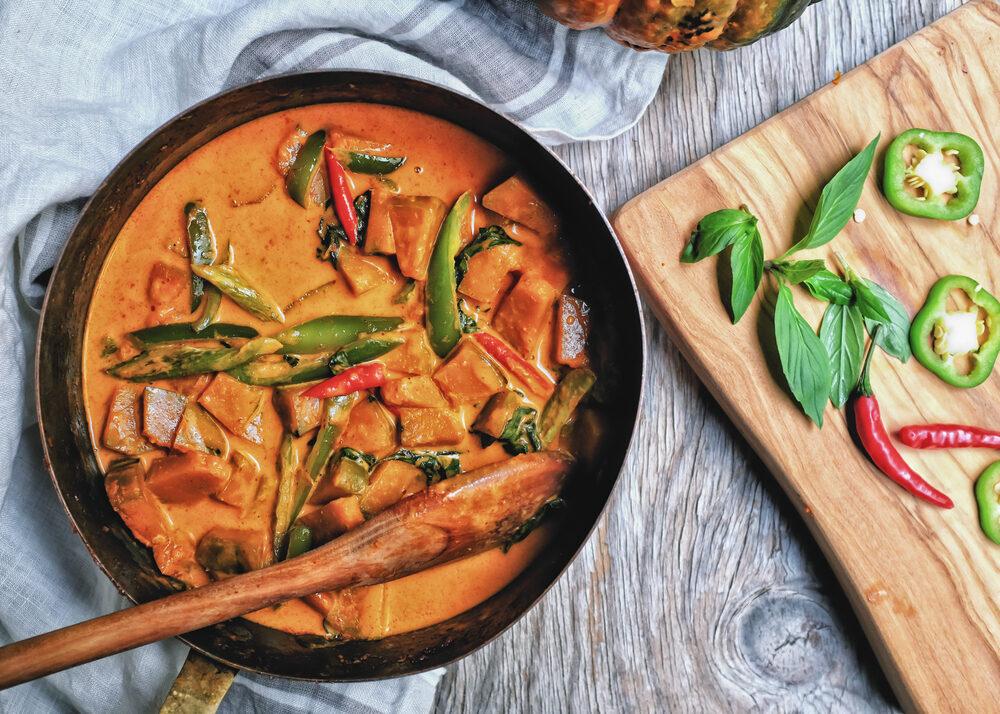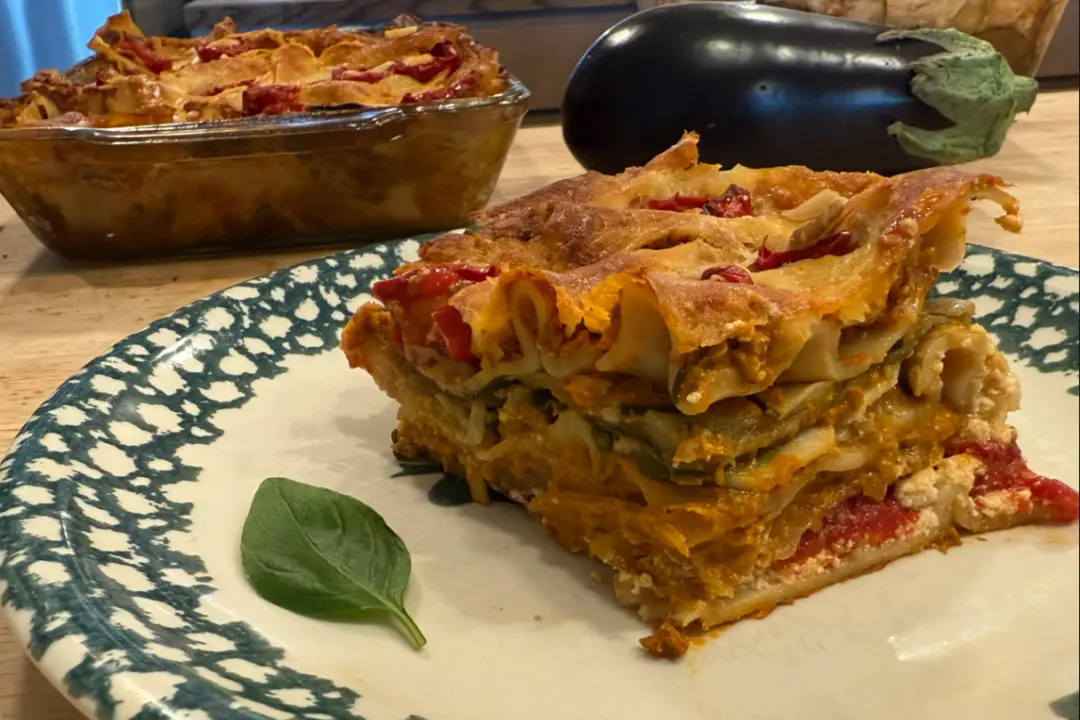He didn’t like curry, and to this day purports to hate coconut, but my son Remy would walk on molten lava for a bowl of red chicken curry. I don’t need to solve this paradox to benefit from the fact that curry offers great leverage to get kids and grownups alike to eat their vegetables. A good curry allows you to work with whatever is fresh, and there are almost as many curry recipes around the world as there are vegetables at the farmers market. I like Thai curry because it is the easiest to make and most delicious to taste.
Green curry is more pungent and bitter, and often the most challenging of the Thai curries. Yellow is sweeter and mellower but no less complex, and reminiscent of Indian curry thanks to the turmeric. Red curry has lots of red chile and coriander and shrimp paste. Remy has no interest in green or yellow. It seems that some ingredient or combination of ingredients specific to red curry must cancel the element of coconut that so offends him.





